
Roots
There exists a profound dialogue between the strands of our hair and the whispers of our ancestors. It is a conversation spanning continents and centuries, etched into the very helix of textured hair. When we speak of hair care choices today, we are not simply discussing product preferences or styling trends. We are touching upon a living archive, a sacred lineage that shapes every decision, every ritual, every affirmation of self.
The journey of textured hair care, particularly within Black and mixed-race communities, is a testament to enduring spirit, a resilient beauty that defies the tides of time and oppression. This exploration seeks to honor that heritage, to illuminate how the wisdom of generations past continues to guide our hands as we attend to our crowning glory. It is a story told not in fleeting fads, but in the enduring legacy of a hair type that carries the weight and wonder of history.
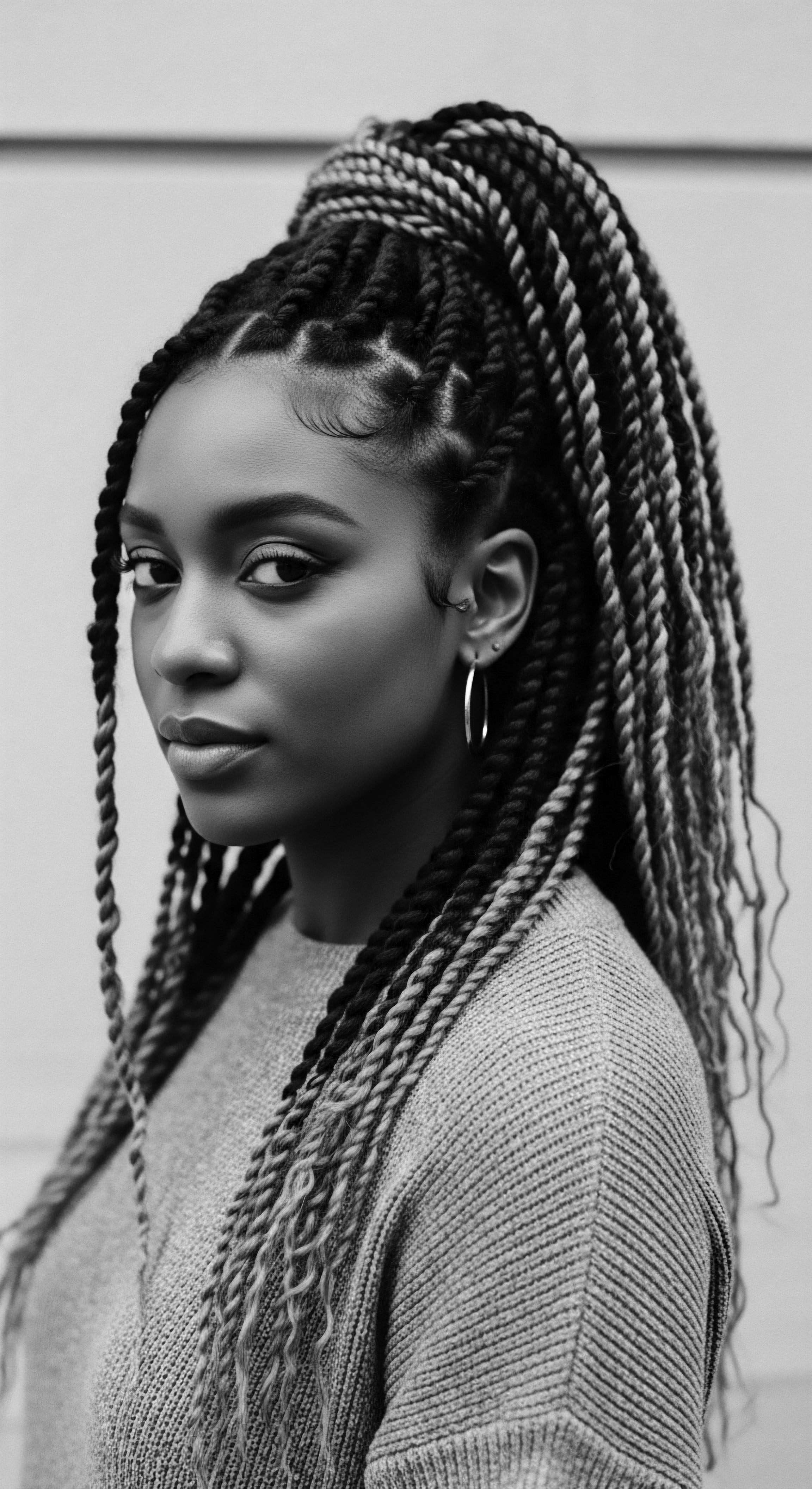
Hair’s Elemental Blueprint and Ancestral Knowledge
Each coil and curl of textured hair possesses a distinct biological signature, different from straighter counterparts. Its elliptical or kidney-shaped follicle creates a natural curve, which in turn leads to its characteristic coiling. This structural difference impacts how moisture travels along the hair shaft and how natural oils, or sebum, distribute.
Such unique morphology contributes to the hair’s propensity for dryness and breakage, conditions that ancestral communities understood deeply through observation and communal wisdom long before the advent of modern trichology. Early societies in Africa, for example, observed how environmental factors impacted hair health and developed sophisticated care routines to protect these precious strands.
For centuries, hair served as a visual language across various African societies. Hairstyles communicated a person’s Age, marital status, social standing, ethnic identity, or even religious beliefs. The practices of styling and maintaining hair were communal events, often involving elders passing down techniques and knowledge to younger generations.
This collective wisdom, born from intimate understanding of hair’s needs in diverse climates, forms the bedrock upon which modern textured hair care stands. Communities created classifications rooted in their observations of hair’s appearance, feel, and response to their homemade remedies, thereby influencing how modern classifications, while scientific, still resonate with these ancient distinctions.
The deep history of Black hair care is a testament to cultural traditions, perseverance, and originality.
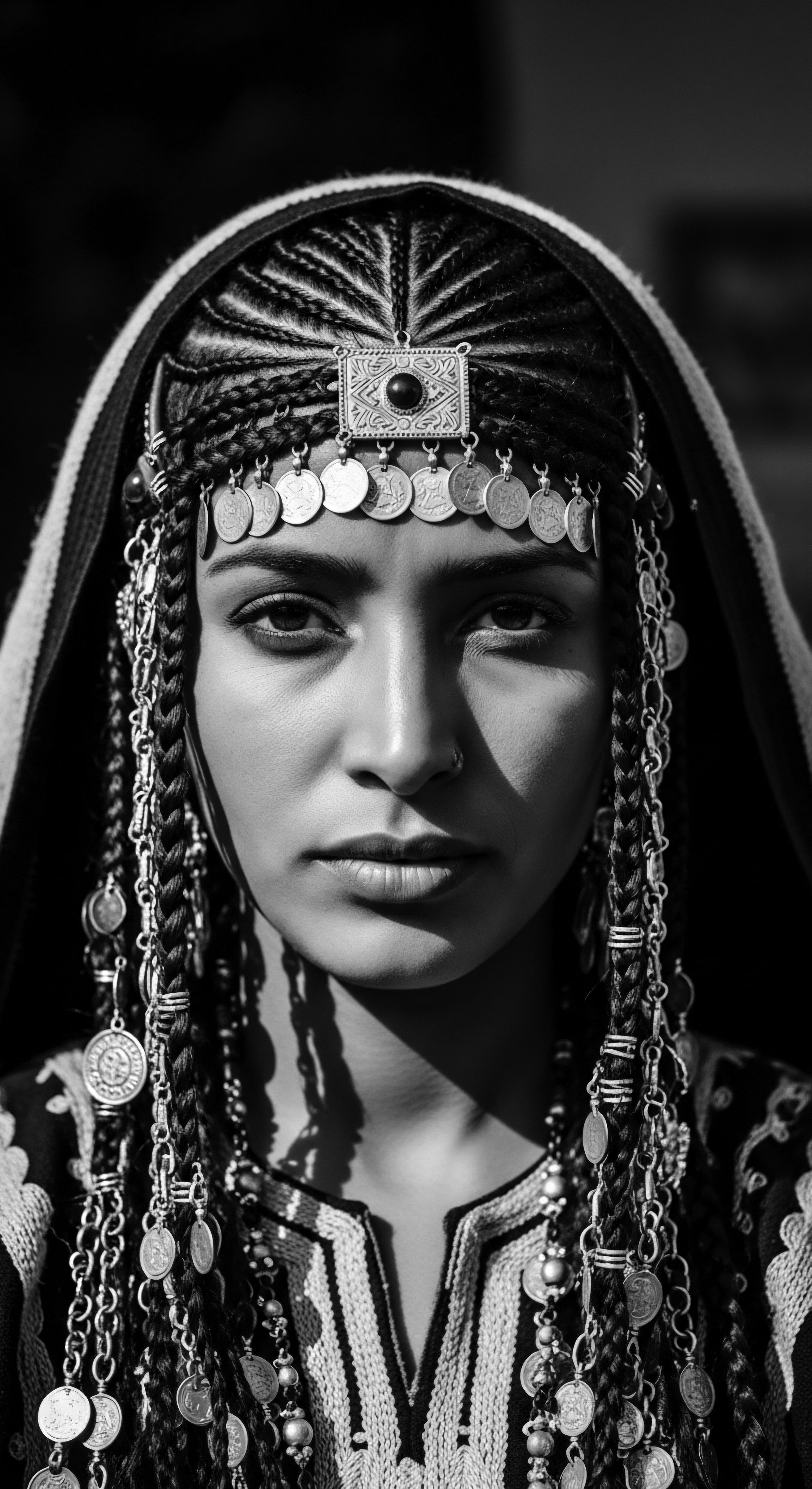
Traditional Lexicon and Cultural Classifications
The language surrounding textured hair today carries echoes of historical perception, some rooted in reverence, others in imposed colonial hierarchies. Terms like “kinky” or “nappy,” once used to denigrate African hair textures during enslavement, were deliberately chosen to strip individuals of their inherent dignity and beauty. This historical weaponization of hair texture created a damaging dichotomy of “good hair” versus “bad hair,” where straight hair was deemed superior, leading to a legacy of chemical alteration for perceived social acceptance.
However, within African traditions, a different lexicon existed, one that celebrated the diverse appearances of hair. While direct scientific classifications as understood today were absent, communities recognized and valued distinct hair types, often associating them with specific tribal identities or spiritual connections. For instance, the Yoruba people of Nigeria held hair in high regard, viewing it as a symbol of good fortune and the most elevated part of the body. Their styling practices, like Irun Kiko (African hair threading), were intricate and spiritually significant, reflecting a deep, inherited reverence for hair.
The contemporary system of typing textured hair, often using numbering from 3A to 4C, is a relatively recent development aimed at categorizing curl patterns for product recommendations and styling guidance. While useful, it cannot fully capture the spectrum of textured hair, nor the historical and cultural meanings embedded within each curl. Our challenge today rests in moving past external classifications that once brought division, finding true expression within our own unique hair inheritance, and understanding how cultural heritage continues to define modern textured hair care choices.
| Aspect of Hair Hair Structure |
| Ancient Wisdom (Heritage Focus) Observed external patterns and responses to environment. Different coiling seen as part of natural variation, sometimes linked to spiritual or tribal identity. |
| Modern Scientific Understanding Identifies elliptical follicles, cuticle layers, and disulfide bonds that influence curl pattern and susceptibility to environmental stressors. |
| Aspect of Hair Moisture Retention |
| Ancient Wisdom (Heritage Focus) Recognized hair's dryness; utilized rich butters and oils like shea and palm for conditioning. Understood the need for protective styles to guard against moisture loss. |
| Modern Scientific Understanding Explains how coiled hair's structure hinders sebum distribution, requiring external emollients. Confirms the protective benefits of certain styles against environmental humidity and friction. |
| Aspect of Hair Hair Strength |
| Ancient Wisdom (Heritage Focus) Valued hair as a symbol of vitality; traditions often included gentle handling, minimal manipulation, and natural fortifiers to avoid breakage. |
| Modern Scientific Understanding Analyzes the tensile strength of hair fibers, highlighting areas of weakness at the curves of the coil. Recommends reduced mechanical stress and protein treatments for increased resilience. |
| Aspect of Hair The convergence of age-old observations and contemporary scientific inquiry enriches our comprehensive care for textured hair. |
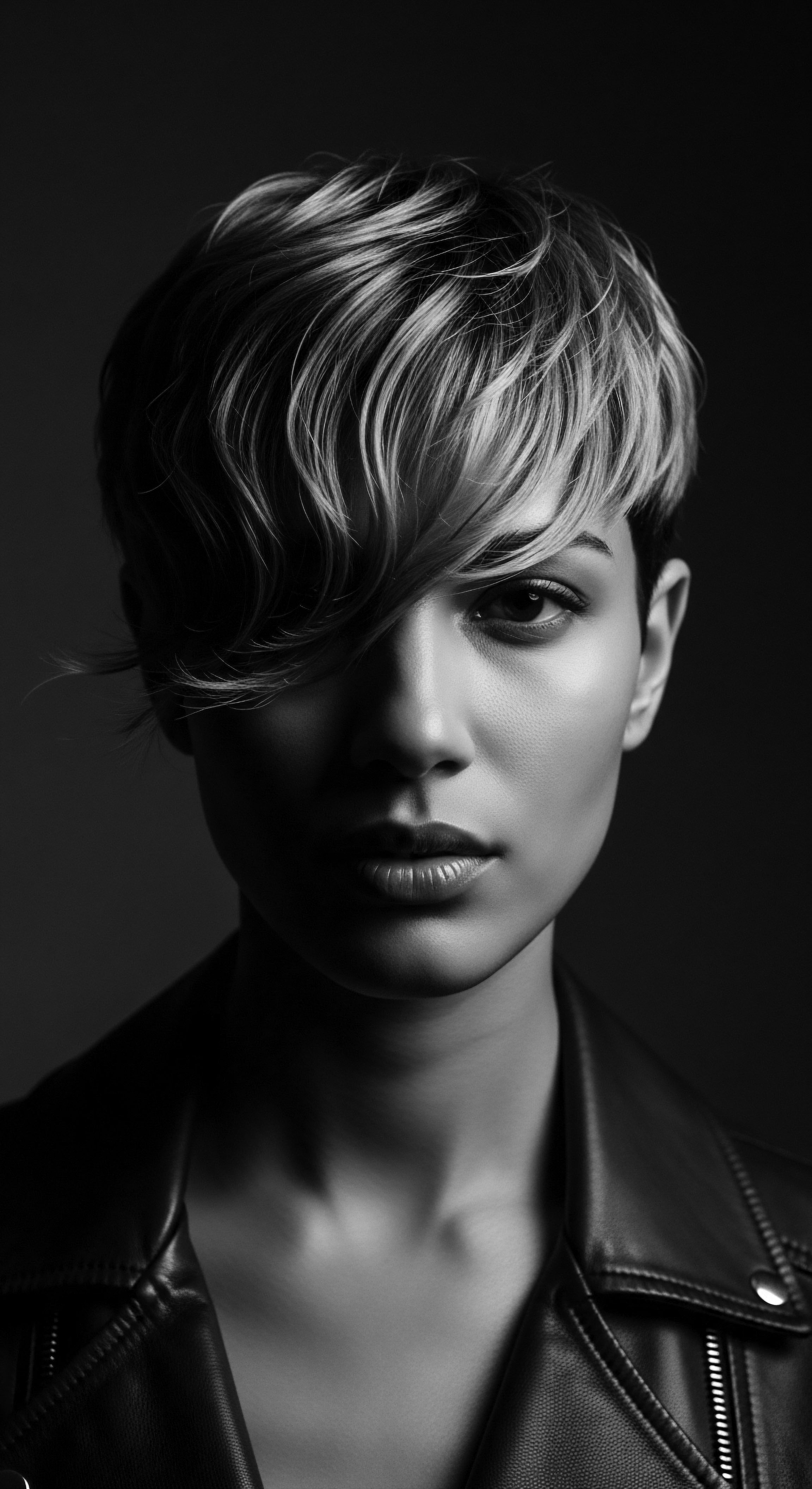
Ritual
The hands that braid, the oils that anoint, the scarves that cover – these are not simply actions or items; they are echoes of ancient practices, living rituals that span generations. Cultural heritage shapes modern textured hair care choices by providing a foundational understanding of styling as both an aesthetic expression and a protective measure. These practices, honed over centuries, connect individuals to their ancestry, serving as tangible links to a rich and often challenging past. Hair styling in Black and mixed-race communities has always transcended mere appearance, carrying profound social, political, and spiritual weight.
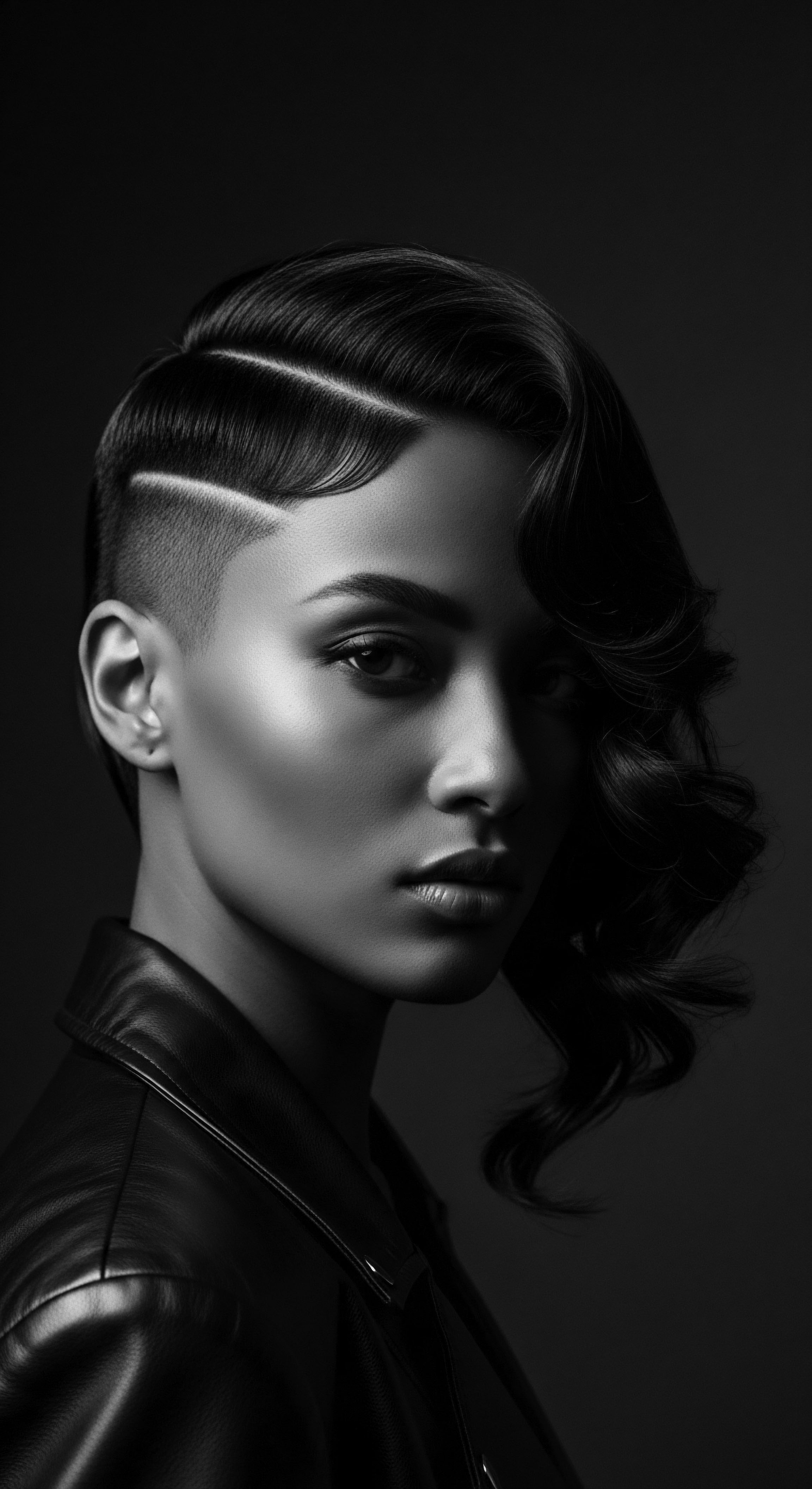
What Historical Practices Inform Styling Decisions Today?
From the elaborate cornrows of West Africa, which served as social identifiers, maps, and symbols of status, to the forced shaving of hair during enslavement, and its eventual reclamation as a powerful statement, the history of textured hair styling is a testament to adaptability and resistance. During enslavement, intricate braided styles, often resembling maps, concealed rice, seeds, and even messages, serving as a silent language of resistance and survival among enslaved Africans in the Americas (Byrd, 2001). This deeply powerful example underscores how styling choices were not superficial but profoundly tied to survival and the preservation of identity.
The tradition of protective styling, so central to textured hair care, originates in these historical imperatives. Styles like Braids, Twists, and Locs protected hair from harsh environments, minimized manipulation, and allowed for growth. The wisdom embedded in these styles acknowledged the hair’s delicate nature, its need for respite, and the power of communal styling sessions. Modern protective styles, while perhaps featuring new synthetic additions or trending aesthetics, retain the core intent of their ancestral counterparts ❉ to preserve, guard, and celebrate the hair.
Beyond protection, styling has always been an art form. The intricate patterns, the symmetry, the architectural forms created with textured hair speak to a profound aesthetic sensibility. This artistry was present in pre-colonial African societies, where skilled stylists would spend hours, even days, crafting elaborate coiffures that symbolized everything from fertility to social hierarchy.
These traditional styles were never haphazard; they required a deep understanding of hair manipulation, tension, and adornment. Modern stylists, drawing upon this creative lineage, continue to push boundaries, often reinterpreting traditional forms with contemporary flair.

Understanding the Tools and Their Evolution
The tools used in textured hair care have a heritage of their own. Early African communities carved combs from wood or bone, designing them with wide teeth to navigate coils without causing damage. These combs were often imbued with cultural meaning, becoming symbols of personal history or status. The communal act of detangling and styling with these tools was as significant as the resulting style, fostering connection and the passing of knowledge.
The Hot Comb, a tool popularized in the early 20th century by Black entrepreneurs like Madame C.J. Walker, offered a temporary means of straightening textured hair, allowing access to Eurocentric beauty standards that were often linked to social and economic mobility. While providing new styling possibilities, it also introduced potential for heat damage and perpetuated the “good hair” narrative.
The chemical relaxer followed, promising a more permanent alteration of hair texture. These tools, while responses to societal pressures, also represent innovation and adaptation within the Black community to navigate a world that often devalued their natural appearance.
Today, the array of textured hair tools is vast, ranging from specialized detangling brushes and wide-tooth combs, echoing ancestral designs, to various heat-free styling implements and safer thermal tools. The availability of diverse tools and styling products empowers individuals to choose methods that align with their hair goals, whether it is to preserve their natural texture or to temporarily alter its appearance. The choices made are a direct reflection of personal aesthetics, the demands of daily life, and a complex relationship with historical beauty standards.
Ancestral styling methods, rooted in deep cultural wisdom, remain a guiding force for modern care practices.
- Shea Butter (Vitellaria paradoxa) ❉ A cornerstone of West African hair care for centuries, recognized for its exceptional moisturizing and softening properties.
- Coconut Oil (Cocos nucifera) ❉ Widely used in various African and Asian traditions for its ability to penetrate the hair shaft, providing deep nourishment and reducing protein loss.
- Chebe Powder (Croton zambesicus) ❉ From Chad, this powder is a traditional secret for strengthening hair, minimizing breakage, and retaining length, often used in a paste with other oils.
- Moringa Oil (Moringa oleifera) ❉ Praised across African communities for its nutrient density, offering moisturizing and fortifying effects on hair.

Relay
The story of textured hair care does not end in history’s pages; it lives and breathes in every choice made today, a continuous relay of knowledge and spirit across generations. Modern textured hair care choices are deeply informed by the enduring legacy of ancestral practices, the resilience forged through struggle, and a profound cultural identity. This ongoing conversation shapes how individuals approach daily regimens, nighttime rituals, and even how they address common hair concerns. It reflects a journey from elemental biology to a vibrant expression of self within a global community.

How do Ancestral Wellness Philosophies Inform Hair Regimens?
For many with textured hair, particularly those within Black and mixed-race communities, a hair care regimen extends beyond mere cleansing and conditioning; it is a ritualistic act of self-care, a connection to lineage. Ancestral wellness philosophies often centered on a holistic view of well-being, where physical health, spiritual alignment, and communal harmony intertwined. This perspective naturally extended to hair, which was often considered a conduit to the spiritual realm and a powerful symbol of identity. Hair care practices were deliberate, slow, and often communal, allowing for familial bonding and the transmission of knowledge.
This historical lens explains why modern textured hair care regimens frequently prioritize gentle approaches, deep hydration, and protective measures. The traditional use of natural oils, butters, and herbs, applied with patience and intention, speaks to an inherited wisdom regarding moisture retention and hair health. Contemporary science now validates many of these traditional practices. For example, the use of certain plant-based oils, long a part of African and Ayurvedic hair traditions, are now understood by modern trichologists to provide essential fatty acids and antioxidants, which are crucial for scalp health and hair vitality.
The collective societal shift towards accepting and celebrating natural hair, often called the “natural hair movement,” is a powerful manifestation of this ancestral wisdom reclaiming its place. It represents a conscious decision to reject Eurocentric beauty standards that historically devalued coiled textures, and instead, to embrace and honor the hair as it naturally grows. This movement is not simply about aesthetics; it is a profound act of self-acceptance, cultural affirmation, and a continuation of the legacy of resistance.

Nighttime Rituals and the Cultural Significance of Head Coverings?
The practice of covering textured hair at night, typically with satin or silk bonnets and scarves, is a deeply ingrained modern custom with clear roots in historical necessity and cultural heritage. This seemingly simple act preserves moisture, reduces friction, and prevents tangling and breakage, all common concerns for textured hair. However, its origins reach back much further than contemporary hair science.
Historically, head coverings held profound social, spiritual, and protective meanings across various African cultures and subsequently within the diaspora. In many traditional African societies, headwraps indicated social status, marital status, religious beliefs, or even a woman’s age. During enslavement, head coverings were sometimes enforced as a means of control and to strip enslaved women of their cultural identity. Yet, these same coverings were ingeniously transformed into symbols of resistance, dignity, and beauty, often becoming elaborate expressions of defiance.
The modern bonnet carries this dual legacy ❉ a practical tool for hair preservation, and a subtle but powerful link to a historical practice of resilience and cultural pride. It connects the user to a continuum of women who, despite varying circumstances, found ways to care for and adorn their hair, even under duress. This enduring tradition serves as a quiet reaffirmation of identity and a personal connection to a rich ancestral past.
| Care Element Moisturizing Oils |
| Heritage Origins and Significance Used shea butter, palm oil, coconut oil for centuries in West African and Ayurvedic traditions for moisture and protection. Often infused with herbs for added benefits. |
| Contemporary Application in Care Choices Foundation of many modern textured hair product lines; ingredients like jojoba, argan, and castor oil are popular, often marketed for their historical or botanical efficacy. |
| Care Element Protective Styling |
| Heritage Origins and Significance Braids, twists, and locs safeguarded hair from breakage and environmental factors, also conveying social and spiritual messages. |
| Contemporary Application in Care Choices Continues as a dominant hair care strategy to minimize manipulation, promote length retention, and offer versatile aesthetics. Styles often draw directly from traditional forms. |
| Care Element Head Coverings |
| Heritage Origins and Significance Headwraps and scarves held cultural, social, and spiritual meanings; also used for hygiene and protection during enslavement. |
| Contemporary Application in Care Choices Silk/satin bonnets and scarves are routine for nighttime protection against friction and moisture loss, a practical echo of enduring ancestral customs. |
| Care Element The enduring utility of historical hair care practices shapes our contemporary product selection and daily routines. |
- Amla (Phyllanthus emblica) ❉ A fruit used in Ayurvedic medicine for centuries, praised for its hair-strengthening properties and ability to reduce premature graying.
- Argan Oil (Argania spinosa) ❉ Derived from the argan tree native to Morocco, valued for its nourishing fatty acids and vitamin E, promoting softness and shine.
- Baobab Oil (Adansonia digitata) ❉ Sourced from the African baobab tree, recognized for its restorative properties, aiding in scalp health and hair elasticity.
- Rosemary (Rosmarinus officinalis) ❉ A herb with historical use in hair treatments across various cultures, now recognized for stimulating circulation and promoting hair vitality.
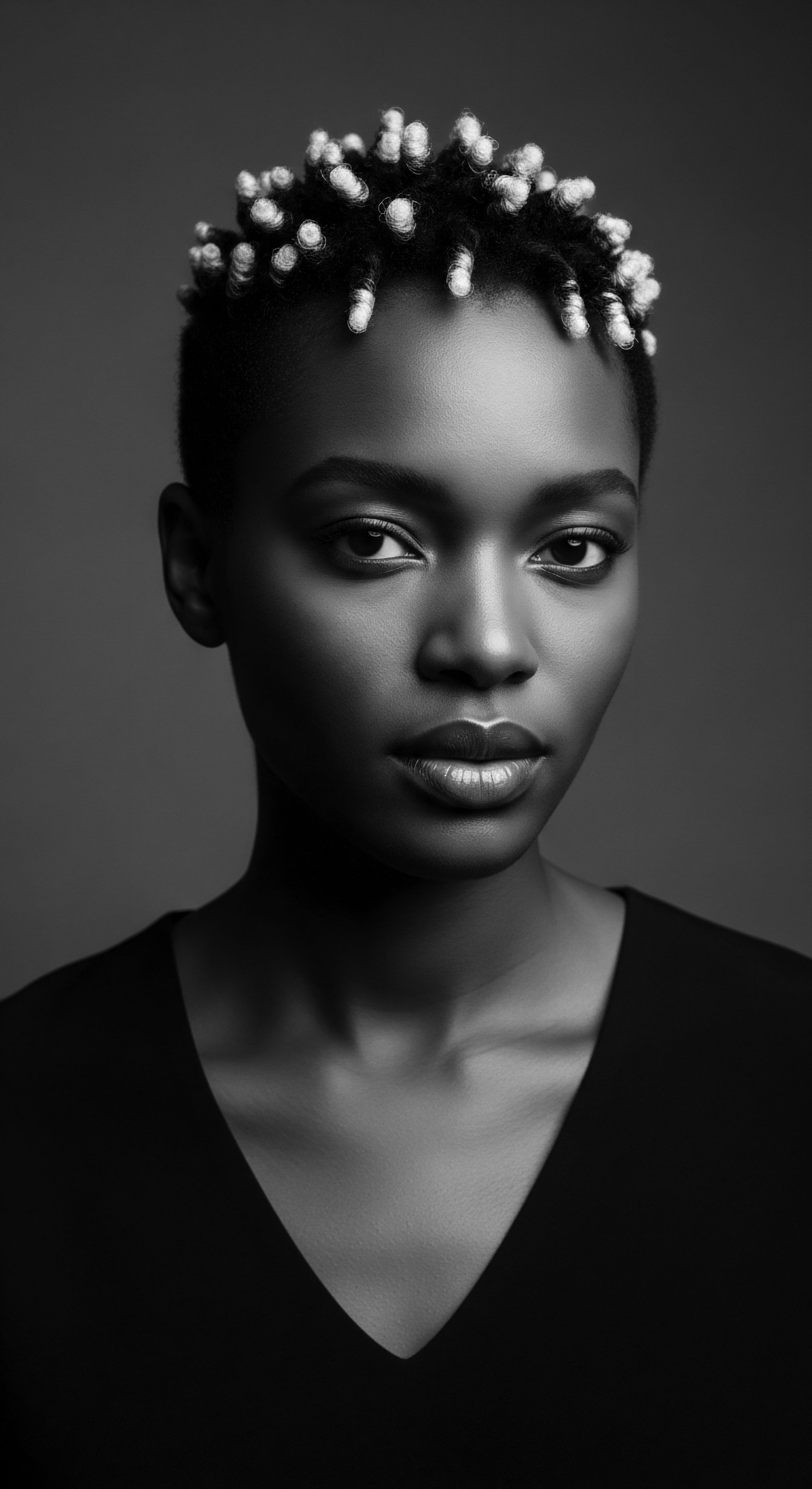
Reflection
The intricate coils and profound histories of textured hair stand as a living testament to a vibrant heritage. Each choice made in modern hair care echoes the wisdom of generations who navigated both reverence and resistance, preserving beauty and identity through challenging times. From the quiet strength of a woman donning her satin bonnet at dusk, to the bold statement of natural curls cascading freely, these acts are never isolated. They are deeply connected to the enduring soul of a strand, a journey from ancestral lands, across oceans, and into the present moment.
This connection to the past is not a burden; it is a wellspring, offering guidance, affirming identity, and empowering a future where every textured hair strand is celebrated for its unique beauty and its profound history. The cultural heritage of textured hair is not merely a collection of historical facts; it is a dynamic force that continues to sculpt our present choices and illuminate the path forward, reminding us that true beauty flows from roots that run deep.
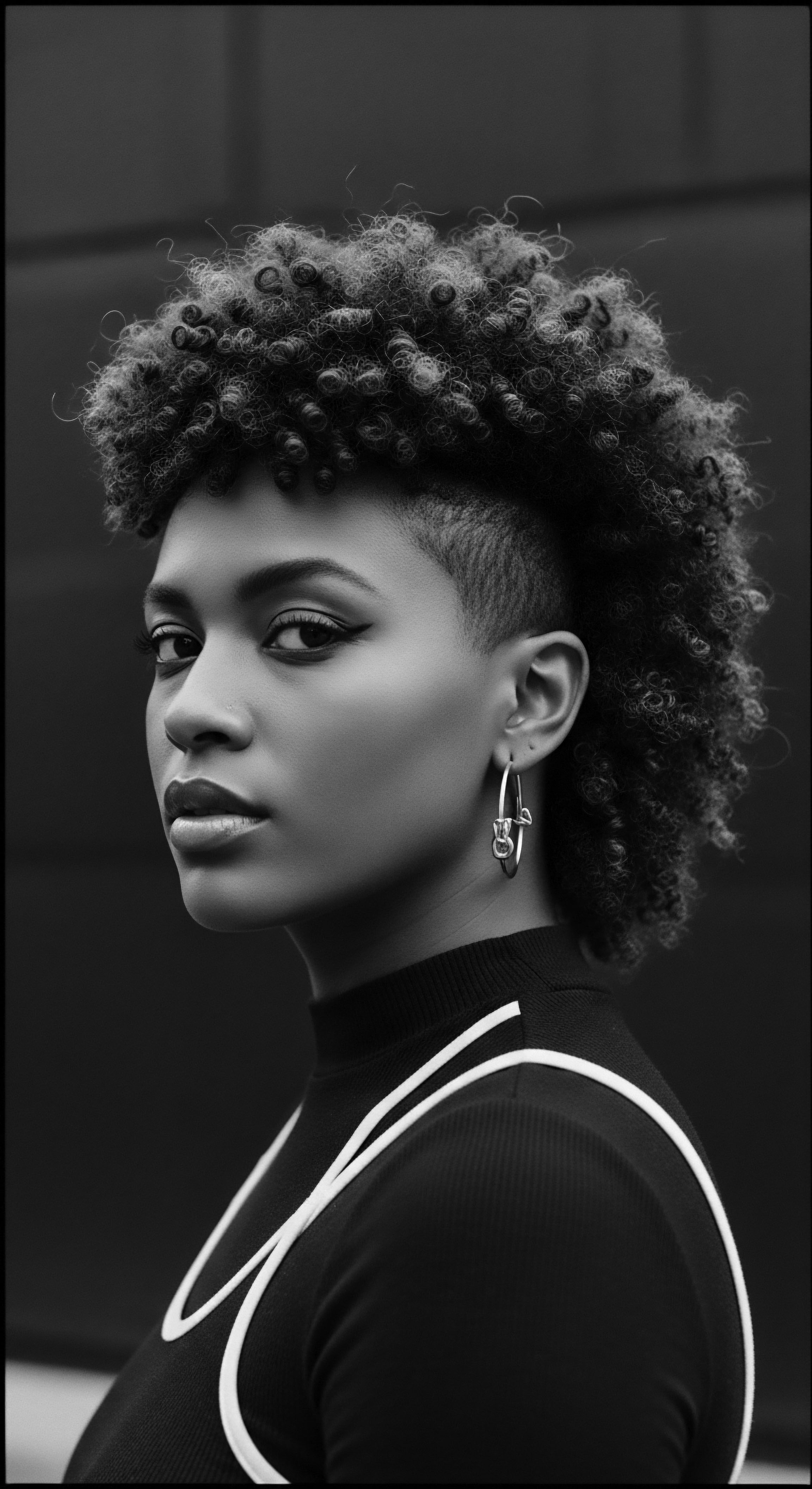
References
- Byrd, A. M. & Tharps, L. L. (2001). Hair Story ❉ Untangling the Roots of Black Hair in America. St. Martin’s Press.
- Johnson, T. & Bankhead, T. (2014). Hair It Is ❉ Examining the Experiences of Black Women with Natural Hair. Open Journal of Social Sciences, 2, 86-100.
- Obiakor, S. J. (2015). Redefining the Identity of Black Women ❉ “Natural” Hair and the Natural Hair Movement. GW ScholarSpace.
- Byrd, A. D. & Tharps, L. L. (2002). Hair Story ❉ Untangling the Roots of Black Hair in America. St. Martin’s Press.
- Oluwa, O. K. Omolokun, K. T. Ogbe, A. A. & Adebayo, O. A. (2024). Cosmetic Ethnobotany Used by Tribal Women in Epe Communities of Lagos State, Nigeria. Journal of Complementary Medicine & Alternative Healthcare, 12(4), 555845.
- Dube, M. & Matereke, L. (2023). Historical Perspectives on Hair Care and Common Styling Practices in Black Women. Dermatology Online Journal, 29(1).
- Khumalo, N. P. Gumedze, F. N. & Ngxokolo, N. (2024). The Genomic Variation in Textured Hair ❉ Implications in Developing a Holistic Hair Care Routine. Preprints.org.
- Adwumi, T. (2021). The Evolution Of The Natural Hair Movement. Refinery29.
- Leone Culture. (2023). Exploring the Significance Of Headwraps In African Fashion And Traditions. Leone Culture.
- Afrostreet. (2025). The Cultural Significance of Headwraps & How to Wear Them ❉ Embracing Heritage and Style. Afrostreet.
- sonson. (2021). The History of Headwraps and Black Culture. sonson.
- Jelani Travel. (2023). Head Wrap History ❉ From South Africa to Global Fashion. Jelani Travel.
